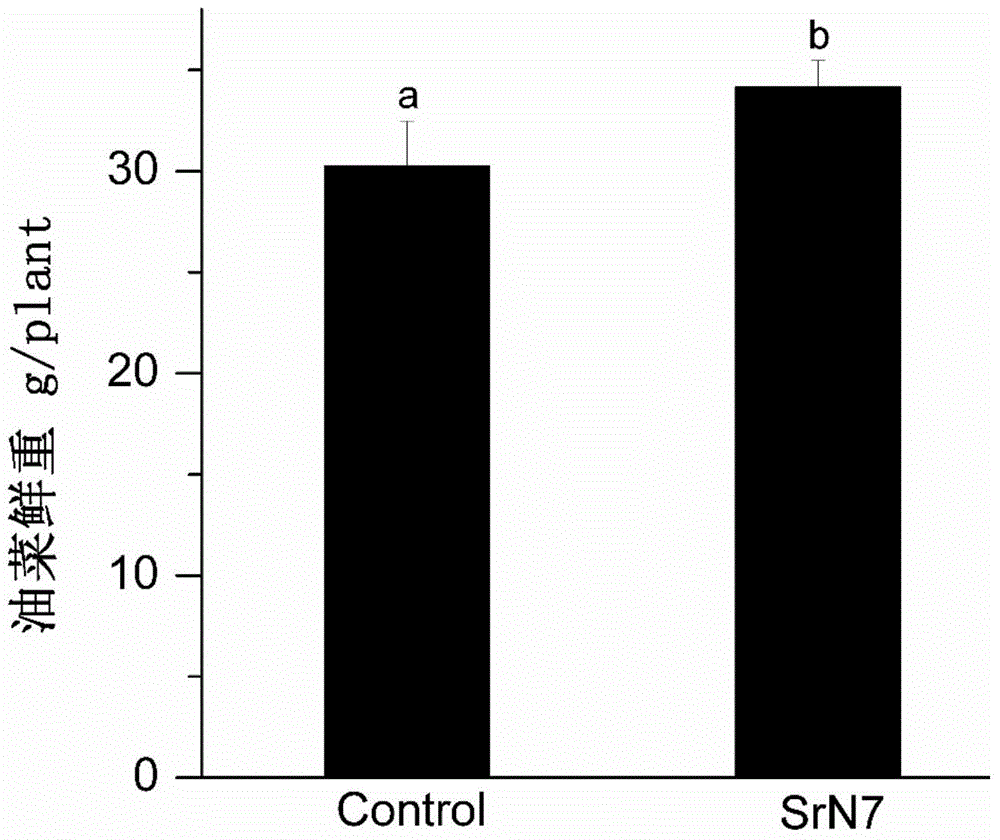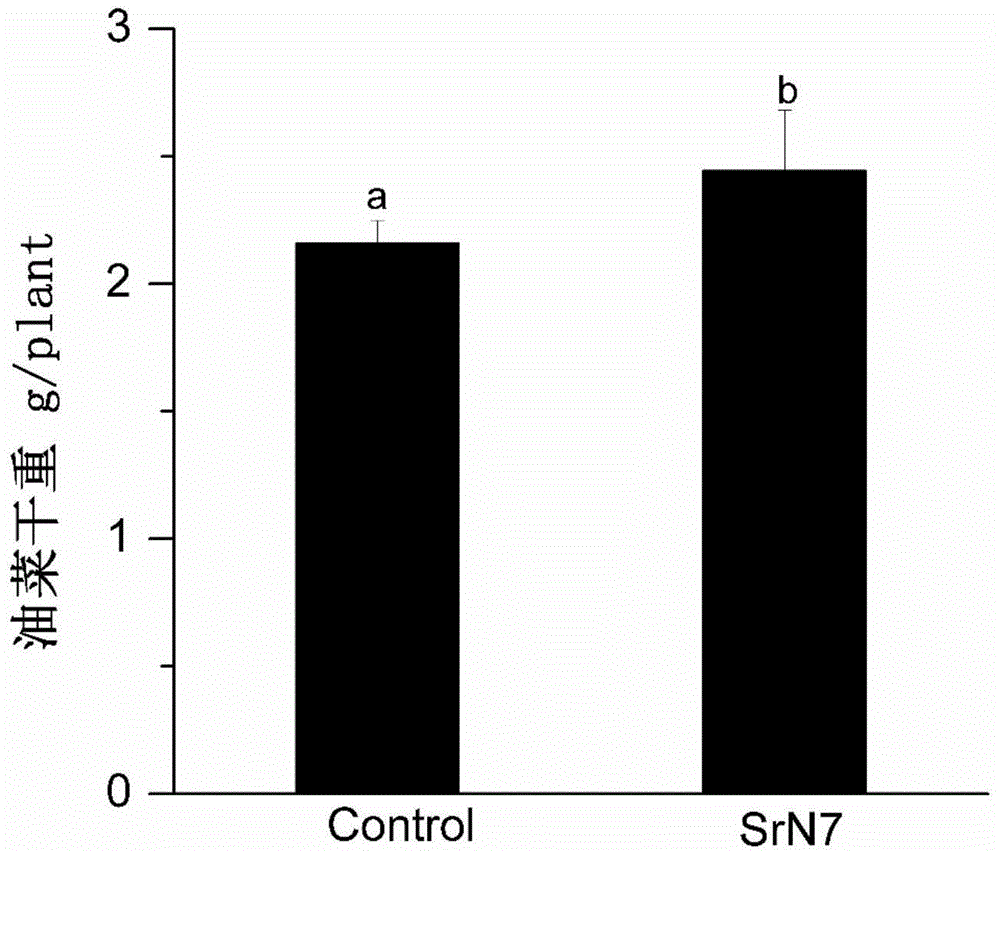Method for reducing nitrate content of vegetables under protected cultivation conditions
A nitrate and vegetable technology is applied in the field of agricultural pollution prevention and control to achieve the effects of promoting plant growth, reducing nitrate concentration and reducing nitrate content
- Summary
- Abstract
- Description
- Claims
- Application Information
AI Technical Summary
Problems solved by technology
Method used
Image
Examples
Embodiment 1
[0036] The screening and separation of embodiment 1 target strain
[0037] (1) Culture medium preparation
[0038] Enrichment medium: KNO 3 10g, KCl 1g, MgSO 4 ·7H 2 O 0.5g, CaCl 2 1mg, FeSO 4 ·7H 2 O 10mg, KH 2 PO 4 0.5g glucose 7.5g, deionized water 1L, pH 7.0. Autoclave: 121°C, 20min.
[0039] Separation medium: KNO 3 10g, KCl 1g, MgSO 4 ·7H 2 O 0.5g, CaCl 2 1mg, FeSO 4 ·7H 2 O 10mg, KH 2 PO 4 0.5g, glucose 7.5g, agar 15g, deionized water 1L, pH 7.0. Autoclave: 121°C, 20min.
[0040] LB medium: tryptone 10g, yeast extract 5g, NaCl 10g, deionized water 1L, pH 7.0. Autoclave: 121°C, 20min.
[0041] (2) Enrichment and isolation of nitrate transforming bacteria
[0042] 1) Enrichment culture of transformed bacteria
[0043] Shake flask enrichment culture method was adopted. Potassium nitrate was the only nitrogen source. The specific steps are as follows: Take 10g of each soil sample, put it in 100mL enrichment medium, place it on a constant temperature sh...
Embodiment 2
[0049] The identification of embodiment 2 target bacterial species bacillus pumilus SrN7
[0050] (1) Molecular biological identification
[0051] Molecular biology identification of SrN7 strain
[0052] Inoculate the preserved SrN7 bacteria into LB liquid medium, cultivate overnight at 30°C on a constant temperature shaker at 180r / min, and extract the obtained bacterial liquid with Shanghai Sangon Biobacterial DNA Extraction Kit to amplify the 16S rDNA of the strain. After purifying the obtained PCR products, BGI was entrusted with sequencing.
[0053] PCR amplification primers are universal primers:
[0054] 27F: 5'-AGAGTTTGATCCTGGCTCAG-3' (SEQ ID NO: 2)
[0055] 1492R: 5'-GGTTACCTTGTTACGACTT-3' (SEQ ID NO: 3).
[0056] The PCR amplification system used a 25 μl reaction system, as shown in Table 1.
[0057] Table 1 PCR amplification system
[0058] Element Content (μl) DNA template 0.5 10×buffer 2.5
[0059] dNTP mixture (each 2.5...
Embodiment 3
[0064] The preparation of embodiment 3 microbial bacterial agents
[0065] (1) Activation and expanded culture of strains: inoculate 20 mL of LB medium with cryopreserved strains, and culture on a constant temperature shaker at 30° C. at 180 r / min for 24 hours. Then inoculate the activated bacterial solution into fresh 100mL LB culture solution with an inoculum amount of 1%, and cultivate it on a constant temperature shaker at 30°C for 24 hours at 180r / min.
[0066] The composition of the LB medium is: tryptone 10g L -1 , yeast extract 5g·L -1 , sodium chloride 10g·L -1 , Agar 15g·L -1 , pH 7.0.
[0067] (2) Fermentation culture:
[0068] Inoculate the expanded cultured bacterial solution into the fermentation medium with 10% inoculum amount, and culture it on a constant temperature shaker at 37° C. at 180 r / min for about 36 hours.
[0069] The number of live bacteria after fermentation is 2×10 9 , The sporulation rate is not less than 85%.
[0070] The composition of ...
PUM
 Login to View More
Login to View More Abstract
Description
Claims
Application Information
 Login to View More
Login to View More - R&D
- Intellectual Property
- Life Sciences
- Materials
- Tech Scout
- Unparalleled Data Quality
- Higher Quality Content
- 60% Fewer Hallucinations
Browse by: Latest US Patents, China's latest patents, Technical Efficacy Thesaurus, Application Domain, Technology Topic, Popular Technical Reports.
© 2025 PatSnap. All rights reserved.Legal|Privacy policy|Modern Slavery Act Transparency Statement|Sitemap|About US| Contact US: help@patsnap.com



